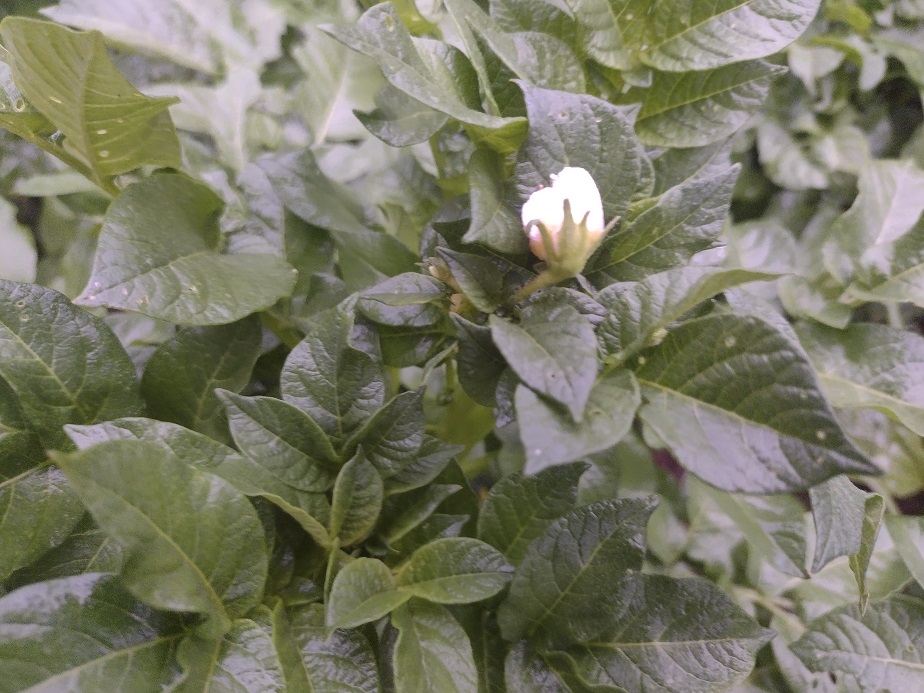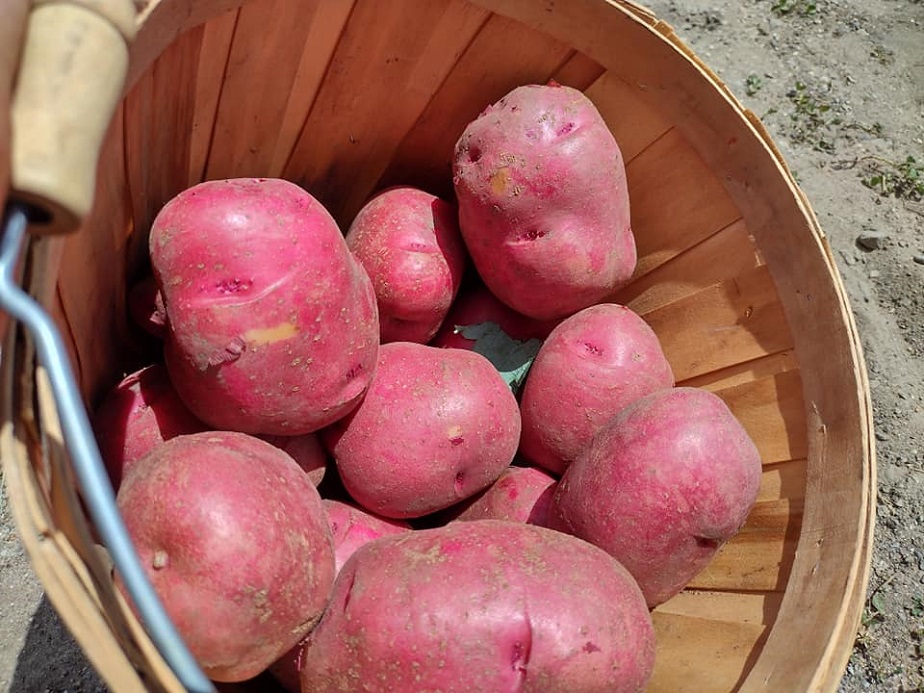Potatoes grow seed-filled fruits that look like little green cherry tomatoes. However, potatoes aren’t usually planted from seeds because They take too long to grow. They don’t produce seeds in warm climates. Potatoes are usually grown from pieces of other potatoes
Very seldom does someone plant potatoes from seeds. In fact, most potato plants don’t even produce seeds. It’s a trait that has largely been lost in the plant. When people found out that an old potato can be cut up, planted, and grown into several new plants, they largely abandoned plating with seeds.
For centuries, potatoes have been mostly grown from other potatoes. With most crops, the production of a high number of viable seeds is a desirable trait. Not so with potatoes. Potatoes that have been stored for planting are called seed potatoes. Seeds from the fruits are called True Potato Seeds
If you take a potato and plant it, you don’t have a new plant technically. You have the genetically same plant the potato came from in the first place. The potato will grow shoots from its eyes. The shoots tend to grow roots from the little nodes (bumps) along the stem wherever there is enough moisture.
The actual seeds are a random mix of all the different gene combinations within the mother plant’s DNA. Generally, a row of potatoes planted from seeds will have a variety of different-looking and tasting potatoes. They may have different sizes, shapes, and different textures. You will get an especially wide assortment if you planted seeds from a hybrid variety.
Potato plants blossom more in cooler climates. They often don’t show up at all in warm regions. In USDA hardiness zone 5b, they produce enough blossoms for my seeds. When you go south to the more temperate zones 6 or 7, they often stop forming blossoms altogether.
How Long Does it take Potatoes to Grow From Seed?
Potatoes take 6 months to grow when planted from True Potato Seeds. They take about 3 months when planted from seed potatoes. Being a cool weather plant, many good growing areas don’t have a long enough growing season to plant True Potato Seeds.
Growing potatoes from seed potatoes will shave two months off the growing time. Suddenly potatoes can be grown in most cold climates, where they grow better anyways. Because of that, potatoes have been selected to grow roots that store and sprout well.
Since they are almost always planted by seed potatoes, using the term “Potato Seeds”, for actual seeds can get a bit confusing. The actual real seeds from the fruit of a potato plant are called True Potato Seeds to help differentiate the two.
The fruits are cherry-sized, firm, green berries full of little seeds that form on pollinated flower buds. Not all flowers are pollinated, and there aren’t many flowers on potato plants to start with. Many vegetable gardeners have even never seen potato fruits because they blend in so well.

Saving True Potato Seeds For Planting
If you have several flowers on your potatoes, chances are, you will have some seed-filled fruits in a few months. When the blossoms fall off, check for little green balls. Those are the potato fruit. About two months after they form, they will mature. You can tell because they get a bit soft.
If you wait too long, the little green berries will fall off, but you can still look for them on the ground. pick the potato berries and cut a small slice in them. Squeeze the seeds out into a cup or plastic container. Add a bit of water and let it sit out for two or three days.
You want the solution to ferment a bit. It only takes a few days in warm weather. This makes it easier to clean the seeds. It also seems to bring about a higher germination rate. It shouldn’t stink much but will become cloudy and have a floating layer on the top.
When it’s fermented a bit, slowly add water to the container until it’s almost full, give it a few seconds to settle, and pour it off, along with any floating debris. Do this several times until the water only has seeds left in it. Pour into a fine mesh strainer. Place the seeds on a flat surface to dry.
Storing True Potato Seeds
It’s recommended to store them in your refrigerator or freezer. Based on all of the other plants in its family, I’d say it’s best to put them in the freezer. Dry them well first though. True Potato seeds will last a year or more if stored well.
I’ve grown potatoes a few times. They are a classic, old-time crop in Michigan. Most of the potatoes I have planted have been grocery store potatoes that got too old for good eating. If in the spring I happen to have potatoes growing sprouts from their eyes, why not plant them?
Planting From True Potato Seeds.
You certainly can plant True Potato Seeds and grow potatoes. They will need to be started indoors, or in a greenhouse, because there usually isn’t enough growing season to get a mature harvest from seed. They are planted in small pots just like you would early start a tomato or pepper plant.
Plant in moist potting soil and cover with a quarter inch of soil. Potatoes usually take one or two weeks to emerge. Keep the soil moist. They don’t need sunlight until after they are visible in the pots. The seeds need to be a little warm to sprout. Sixty-five degrees is the standard.
Potatoes are one of the most important food crops in the world. A good crop will produce as much food per acre as corn, about 15 million calories per acre. Potatoes have fairly well-rounded nutrients for a vegetable. They are not related to the sweet potato or yam. Those are different plants.
They originated in the mountains of Peru, and were first brought to the Netherlands by early explorers. From there, five hundred years later, they spread across the globe. You can find True Potato Seeds for sale at many reputable heirloom seed companies online.
Related Articles:

